Emmanuel A.
May 6, 2023
•7 minutes
Can Wrist Rests Be Good for Your Health?
Ever wonder what wrist rests can do for you? Learn more about the functions and benefits of wrist rests and the factors you should consider when buying one.


Wrist Health is Important!
Spending most of the day in front of your computer comes with its downsides, from eye strain to stress and tension on certain muscles of the body and some other drawbacks associated with living a sedentary lifestyle, such as obesity. Thankfully, a lot of measures have been put in place to help active computer users deal with these downsides and work healthily. Thanks to ergonomic innovations, active computer users can now continue at what they know best with little or no stress on muscle groups and without fear of future health concerns.
Wrist rests are one of such ergonomic innovations. They are designed to provide cushioning support for the wrists while ensuring that they are positioned at a healthy angle when working, in order to prevent tension on the muscles of the shoulders and neck. Despite their benefits, there have been reservations and displeasure towards using wrist rests due to some other health concerns. In this article, we will spend quality terms exploring what wrist rests are, how they help for better computer usage, and how to use them the right way for maximum benefits without further health complications.
What are Wrist Rests?
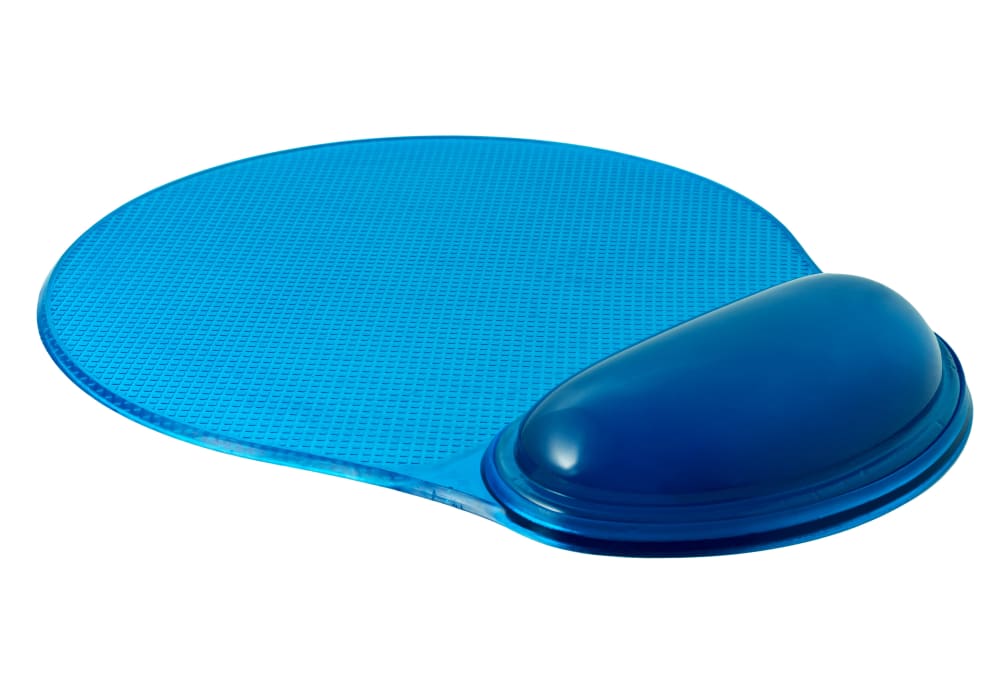

Example Wrist Rest with Mouse Pad
A wrist rest is an ergonomically created device used for providing support for the wrists when using the computer. Ergonomic devices are generally designed to help increase productivity and efficiency when working while reducing or altogether eliminating discomfort, strain, and fatigue. There are tens of ergonomic equipment fit for different uses, ranging from workplace tools and equipment to even healthcare assistive devices.
Ergonomics can be factored in during the production of equipment and tools. For example, there are ergonomic office chairs and keyboards with wrist rests incorporated into their design. Theare are even ergonomic switches for your mechanical keyboard! Ergonomic devices can also be created as add-on devices to increase efficiency and reduce fatigue. Such is the case of wrist rests, which you can purchase separately.
Wrist rests are used during active use of the keyboard and/or mouse and during other repetitive activities that require maintaining a sitting position and placing the hands on a desk for extended periods. The wrist rests provide a soft padding for the wrists to lie on, rather than letting them lay on the hard surface and sharp edge of the wood all day long.
Wrist rests can come as a pair to use for both wrists or as one extended padding that will serve both hands. There are also smaller wrist rests for mouse use and these usually also serve as a pad or mat for the mouse to lay on.
Are Wrist Rests Healthy and Safe?


Typing Angles Matter
When you keep your wrists on a rest at the edge of the desk for extended periods, it is possible to begin to overly exert pressure on the underside of the wrists and the delicate tendons there, causing quite significant health concerns such as the carpal tunnel syndrome (CTS) and tenosynovitis. CTS impacts hand function, causing tingling, numbness, and pain in the hands, fingers, and wrists when manipulating them. Tenosynovitis, on the other hand, is the inflammation of the sheath surrounding the tendons at the underside of the wrists.
At the same time, it is known that using wrist rests helps to ensure the wrists and arms are positioned at the right angle while working and will help prevent tension in the muscles of the neck, shoulders, and upper arms. Besides, not using a wrist rest might cause putting the most pressure on the underside of the wrists, as computer users will now place their wrists directly on the hard and sharp edges of the desk.
That said, wrist rests are indeed ergonomic and helpful. They can also be safe for use and devoid of other health complications when used the right way. When wrist rests are not used correctly, however, they have the potential for causing the same problems they were designed to alleviate.
How to Use Wrist Rests the Right Way
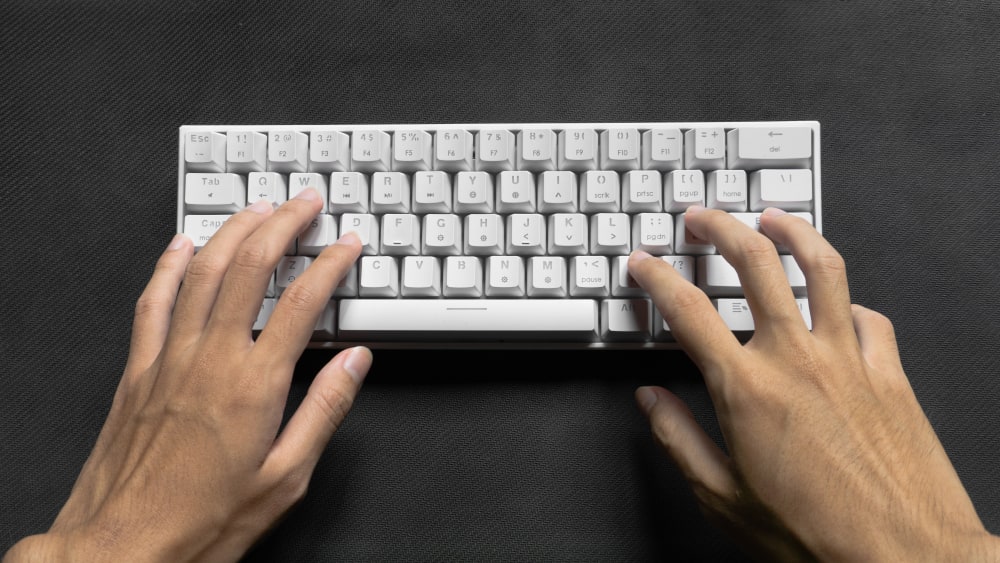

Keep Wrists Elevated When Typing
It is not just enough that you purchase nice, plush, and fanciful wrist rests, it is also important that you know how to use them the right way.
When working at your desk, the healthiest way to position your wrists is in a well-balanced position, not angled or bent up or down. Since in most situations, the desk is always higher than the chair, wrist rests grant some form of padding and elevation for the wrist to ensure that they are not bent down and laid heavily on the desk.
If a wrist rest is too high, however, or if the desk-to-chair height is not in the right proportion, it can still cause the wrists to dig too heavily into the wrist rests and cause pressure.
Here are some tips for using wrist rests the right and healthy way:
- Although they are called wrist rests, the padding provided by these devices is meant for the heel of the palm, and not exactly the wrists, so that the wrists will not come in contact with the hard desk surface. When using a wrist rest, ensure your hands stay elevated but are able to move freely, and that it is the heel of the palm that lay directly on the rest.
- The slope of the wrist rest should sync with the slope and height of the keyboard against the edge of the desk. The wrist rest should not turn out too high or too low or bumpy as the keyboard or mouse gives way to the desk surface and then to empty space. You will know the rests are rightly placed when they help the wrists maintain an inline position, not bent up or down.
- Choose wrist rests that provide the right amount of support. Do not go for wrist rests that are too thin and consider replacing your wrist rests once the padding begins to eat off. The wrist rest should be rounded and fairly soft and should provide support that is at least 1.5 inches (3.8 cm) deep. The wrist rest should be devoid of sharp edges and the slope should conform to the height and slope of the keyboard.
- Note that flatter keyboards will need little or no wrist support. The more raised the height of a keyboard is from the desk, the higher the cushion of the wrist rest should also be for leveled angling. If you are a lover of mechanical keyboards, for example, you will most likely be using a keyboard that is relatively taller than other kinds of keyboards. A wrist rest with thick padding is therefore recommended.
- For best ergonomic results, consider using wrist rests as part of an ergonomically-coordinated workstation. That is, ensure every other tool, equipment, and device used in your workstation has been ergonomically designed and is compatible for your use.
- Prevent overly bending the wrists by adjusting your chair and desk heights to the appropriate levels, so the wrists can maintain a leveled position. If you share the same desk with others, consider using adjustable furniture that can always be adjusted to suit individual heights.
- Ensure your workspace setup allows you to evenly distribute your weight. That way, all the weight of your body will not lie on your wrist when you press them down on the desk or wrist rest and the tension effected will be lower.
- You can choose not to use a wrist rest if you take enough breaks between tasks, or if your activity while at the computer is not intense and for extended periods.
- Consider using a desk mat or mouse pad in place of a wrist rest or in addition to a wrist rest if you'd like to occasionally rest your wrists without getting a wrist rest.
Note that using wrist rests is not the only way to alleviate stress and fatigue and improve efficiency when working at your computer. In fact, if you use a properly adjusted chair with the right heights that ensure a healthy angle for the arms, you might not need a wrist rest. The goal is to avoid letting the wrists rest too heavily on the desk or wrist rest. If the sitting posture and furniture heights are therefore wrong, using a wrist rest will not achieve the desired results.
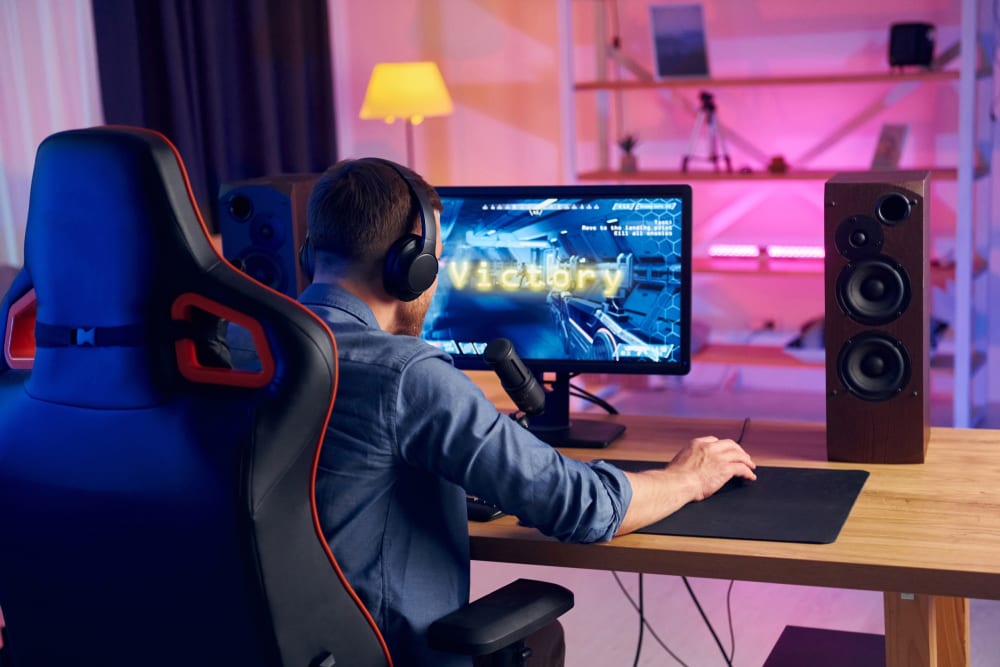

Ergonomic Desk Chairs are Important
For excellent results and all-round muscle health, consider using other ideal devices such as monitor raisers and ergonomic chairs and desks. At the same time, do not forget to practice right sitting and balancing postures when working, while ensuring to take breaks from staring at the monitor at intervals to relieve strain on the eyes. You should also create time to exercise regularly and move around between work sessions to increase blood flow and prevent the accumulation of excess fat.
Things to Look Out for When Buying a Wrist Rest
It is easy to overlook how important it is to carefully select a wrist rest. Not only is it not the most glamorous part of your set-up, but it is also technically not contributing anything to your work output. These are reasons why it is possible to not pay as much attention to it, as compared to how you will carefully choose a keyboard or mouse.
But as you already know, productivity relies heavily on sound health. If your wrists are in bad shape, then you will not be as effective as you ought. Besides, you want to ensure your work setup helps you eliminate health issues that might want to rear up in the future. This is why it is important to pay attention to these details as you shop for wrist rests.
Size
Just like keyboards, wrist rests come in several sizes, from those that are designed to accommodate just one hand per time to those designed to stretch from both ends of a keyboard. Primarily, you should go for a wrist rest that matches the size of your keyboard. Do not pair a mini wrist rest with a full-sized keyboard, for example, or you will find your hands outside of the wrist rest area when you are using certain keys on the keyboard.
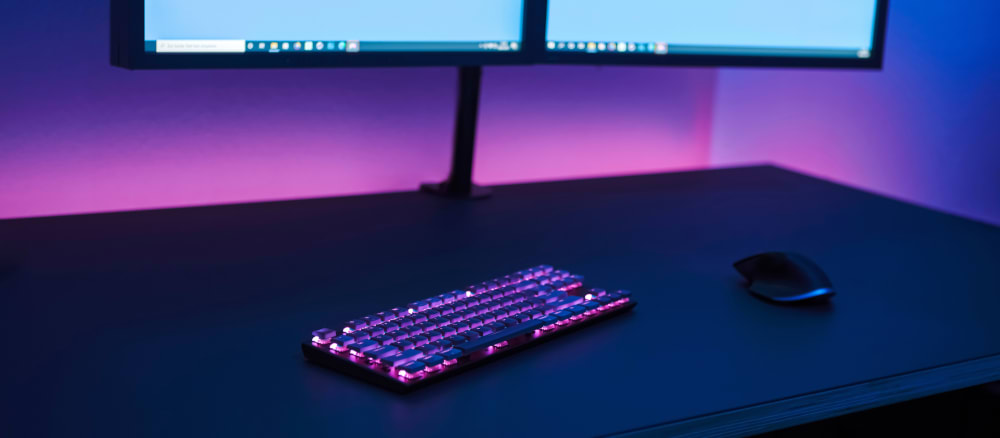

Wrist Rest Should Be Proportional to Keyboard & Desk
Another factor you want to consider to choose the right size for your wrist rest is the size and setting of your workspace. But it is most likely that your desk will be able to accommodate the right size of wrist rest if it can already accommodate the keyboard. Hence, the size of your keyboard is what should determine the size of the wrist rest you go for.
Height
As already mentioned, the slope of your wrist rest must be fit for the height of your keyboard or mouse. The wrist rest should not turn out to be too tall or too flat for the accessory you are purchasing it for.
Padding and Cover
Wrist rests are made from different materials. What materials they are made from will determine their durability and overall outlook. But before you start considering if you prefer the plushness of fur over leather, you should primarily consider what impacts, if any, the materials a wrist rest is made of can have on your health. Choose wrist rests made from materials you are non-allergic to, and ensure the padding is soft enough and that the cover does not have a harsh feel on the skin.
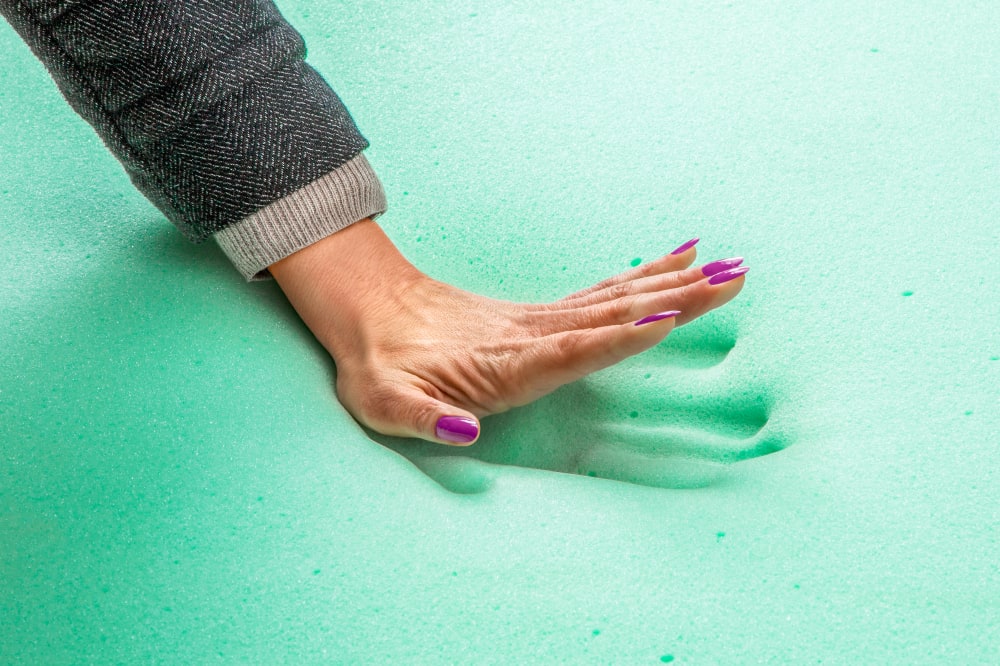

Foam Wrist Rests are a Popular Material
Also, the base of the wrist rest should be made from a material that will prevent slipping. Most wrist rests have bases that are made from rubber. However, the material of your desk will also determine how much slip any other object that comes in contact with it will have.
Of course, outlook is important. So you should go for wrist rests that match your taste and perhaps also match the already existing décor of your desk. You can ensure this by factoring in details like cover material, color, and pattern.
Conclusion
It does not matter whether you're an active gamer, a fast typist, or a bad-ass programmer, a wrist rest is that tiny detail you need to bring all the difference to your experience while at the desk, facing your computer all day. The use of wrist rests is tested and proven for eliminating strain on the wrists and muscular tension on the neck, shoulders, and the upper arms. And when used correctly, they are safe and will pose minimal risk for other health concerns.